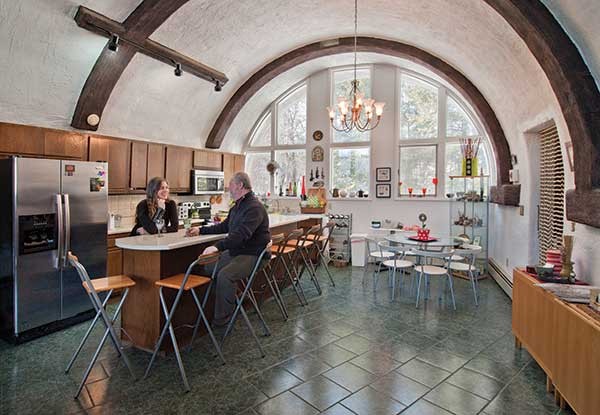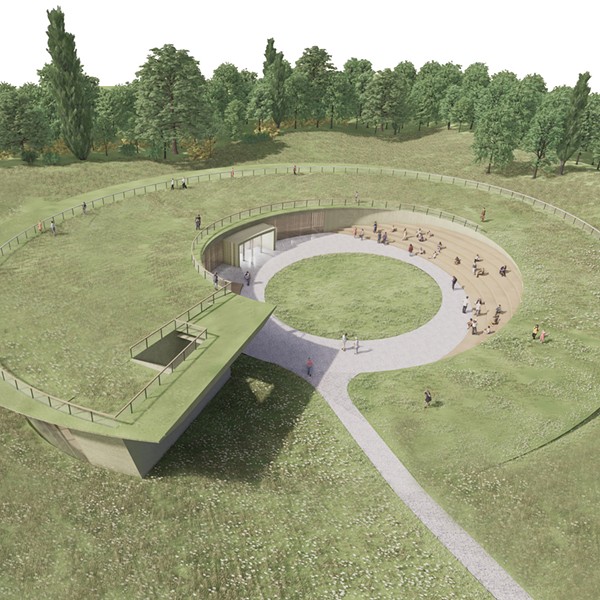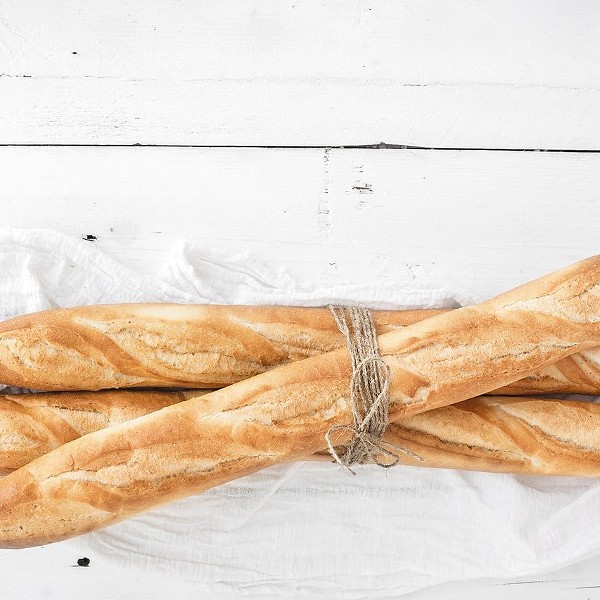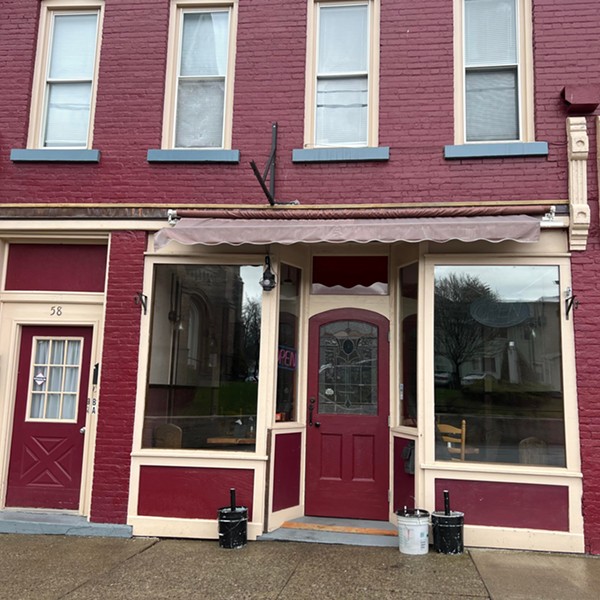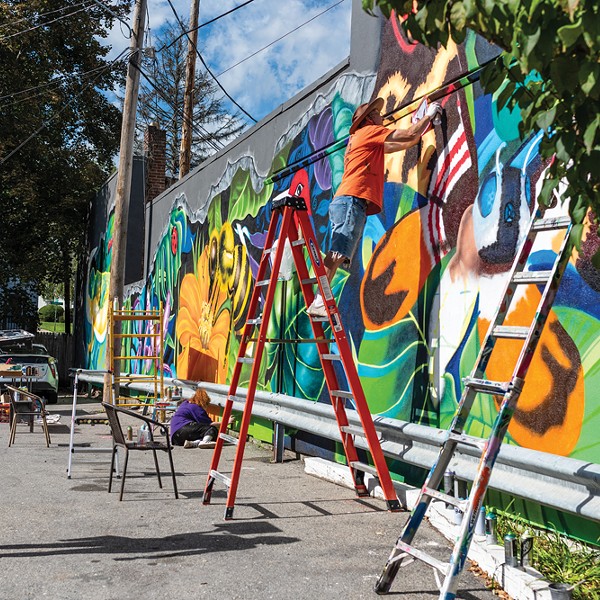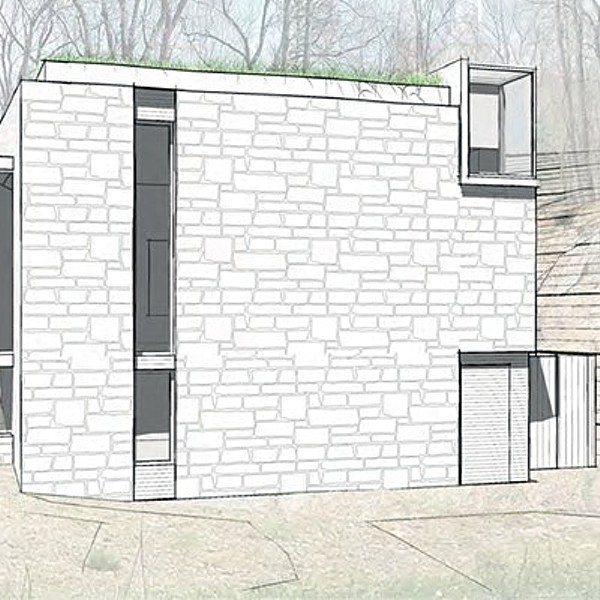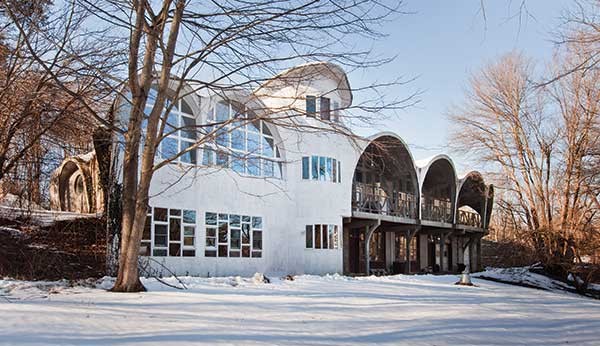
Artist Elisa Pritzker and entrepreneur Enrique Rob Lunski played together as children in Argentina, eventually marrying—her second, his first—and buying their folk art dream house 14 years ago in the town of Lloyd, near Highland, in Ulster County.
"I'm from Mar del Plata, Argentina's biggest seaside resort, and our home, Casa del Arte, recalls the Gaudí-inspired architecture of some of the great beach houses there," says Pritzker.
Antoni Gaudí, 1852-1926, was a revolutionary Spanish architect known for his extreme originality and pioneering work in "naturalism," a rather vague design movement characterized by the use of organic shapes, such as sensual shell-like curves. He was nicknamed "God's Architect," and his most acclaimed buildings incorporate simple floral motifs and many curves. He was also a devout Catholic whose great basilica, the Sagrada Familia in Barcelona, remained unfinished at the time of Gaudí's death and is still being worked on today. It is expected to be completed by 2026.
Like Gaudí, Pritzker is driven to reinterpret nature artistically. "I collect a lot of things," says Pritzker, who often works with animal furs, bones, and found objects. Her handpainted antler sculptures quickly sold out at the recent Kingston Museum of Contemporary Art fundraiser. She also makes photographic monoprints, often on aluminum. Lately she's been inspired by tree trunks—she turns them upside down and puts panties over the branch crotch angle—and zippers, partly because she believes that so many things are coming undone right now.
"Our house is simpler than a Gaudí, but it has something of that feeling, like a Mediterranean castle. When you buy a house, it needs to match your lifestyle. We were moving from a small townhouse at a very good address in Highland in which we had raised our daughter. Now we wanted something very special, something that would help us fulfill our dreams, and it's really done that for us," says Pritzker.
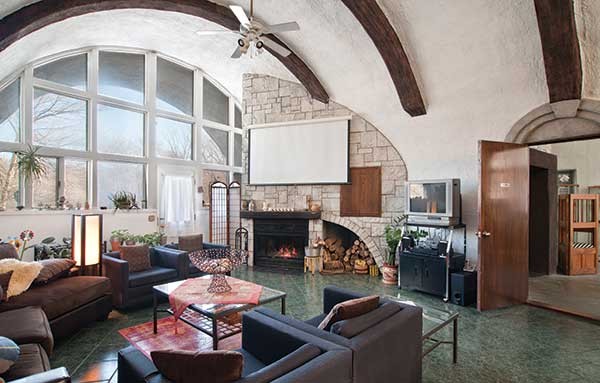
Lunski and Pritzker share their home with a German Shepherd, a Chihuahua, and two cats.
"I am married to my very best friend; I have known him since I was seven years old. He tells me he was waiting for me, that I'm his true love," says Pritzker.
Built by a High School Teacher and His Students
Casa del Arte is approximately 4,000 square feet and has what could be seven bedrooms and four baths. Many windows are arched or round. There's an interior tower adjacent to stairs leading up to the third floor guest suite. The California kitchen/living room is very large, but the bedrooms and baths are smallish and fairly simple. A long curvilinear balcony dramatically winds around the entire back of the house; it could have been inspired by the most fanciful, elegant animal architecture on Pandora, the enchanted planet ni James Cameron's Avatar. The basement, or first floor, features its own entrance and may one day be converted into an income-producing separate apartment.
Casa del Arte is made of wood, wire mesh, and a mixture of Portland cement and sand known as ferro-cement. The inside is wholly finished with stucco. This construction technique allows for a great deal of design flexibility and is popular in developing countries because it provides better resistance to the elements and natural disasters than conventional materials. It's also relatively easy to learn, and therefore popular with cost-conscious do-it-yourselfers. But Pritzker and Lunski employ a maintenance contractor to take care of the structure for them; he regularly seals the exterior.
Pritzker and Lunski bought the house, which sits on four acres and overlooks a man-made pond, from the estate of Thad Matras, a bachelor teacher and inventor who hired high school students as summer construction labor. Over the years, a number of people who knew Matras or worked on the house have stopped by.
"[Matra] had an accident and died before it was fully finished, which is why parts of the house have a very raw feel, but that's perfect for me, because some of my art projects are messy, and I also have plenty of room on the basement floor for my installations," says Pritzker.
"Matras was a philosopher," says Lunski. "Architecture was one of his hobbies. This is actually his fourth house and his largest project, begun in 1979 and built over a period of six years. When he died, his family wanted to keep it—even the garage is like a sculpture, a work of art, but in the end, it sat mostly empty for almost four years. We had seen the house—it's a real neighborhood landmark—and even made an inquiry, but then suddenly it became available for sale after the strangest series of events—it was almost mystical. I feel as if I know Matras, and that he wanted us here."
Nothing Compared
Three previous buyers had the house under contract, only to have the deals fall apart for various reasons. In one situation, a man left a sizable down payment, then went on a vacation to Florida during which a relative died and left him lots of money. He walked away from the transaction.
Obtaining a mortgage on the property proved challenging because there were no clear comparables for the appraisal estimate. Lunski, who used to teach business classes at SUNY New Paltz and is currently president of a nonprofit that helps women and minorities start their own businesses, had great credit, but was repeatedly rejected by bankers apparently lacking in imagination. "I finally found a sympathetic lender in Kingston who saw its value," says Lunski. "We have had several very attractive on-the-spot offers from admirers, but we're not going to sell anytime soon."
Until a couple of years ago, Pritzker ran a small art gallery out of the house, but traffic slowed down as critical acclaim and Internet-based sales of her work climbed. The couple, who are unusually social in a relaxed way, occasionally rent their home out for events, as well as host fundraisers and a couple of large parties annually. At the behest of one of Lunski's colleagues, they once entertained an all-male business development delegation from the People's Republic of China. Only one person spoke English. "We had Chinese music and food," recalls Pritzker, who was much amused by the experience; her guests were flatteringly taken with their unusual surrounds. "I think the curved ceiling of the living room encourages conversation, because you have this sense of freedom from the height—expansion, but then contraction, as it slopes down," she says.
"We love the location. It's so convenient to the city to take Metro-North, and we're in a real neighborhood, but just off a couple of major roads—Routes 9W and 299, so that's good for when it snows," says Pritzker.
The house remains a work in progress. But the first renovation was ripping up all the old carpet and laying tile throughout the main floor. Large and well-loved sectional sofas turn the barrel-vaulted living room into a spacious conversation pit facing a projection screen—they enjoy watching movies, particularly foreign films.
Lunski's a true chef. "I used to cook for a school in Argentina, and here I had a holistic bakery. I learned from a German baker how to make light sponge wedding cakes, five or six tiers," says Lunski. What does he like to serve dinner guests at Casa del Arte? "Empanadas," he says.







